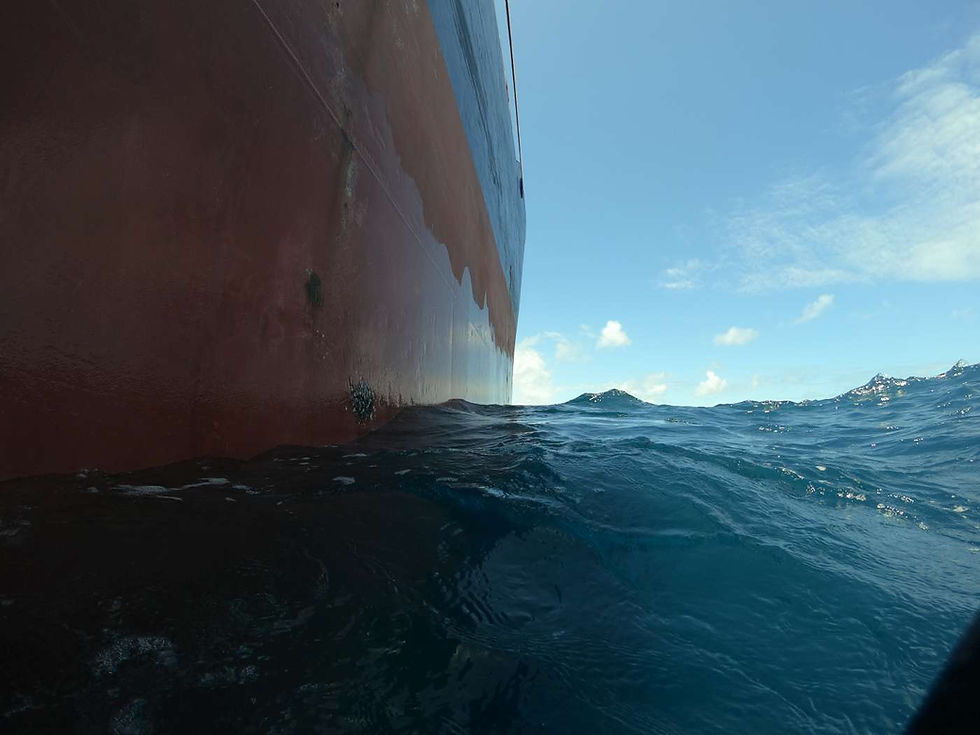Weather experts relied on hindcast data
- Oct 11, 2023
- 3 min read

The below only refers to the weather experts’ input as to whether the experienced weather had any causative potency. In this case, the starboard leg of the oil rig “Cendor MOPU” was lost at sea off the coast of South Africa just north of Durban. At the time, the rig was being towed on a barge from Texas to Malaysia, with its legs in place and elevated in the air above the deck. The following evening, the remaining two legs fell off in quick succession. The experts agreed that the loss occurred because of fatigue cracking caused by the repeated bending of the legs under the influence of the motions of the barge as it was towed through the sea. The question was whether the loss was covered by the insurance or not.
The answer depended on issues of causation, which largely turned upon factual evidence.
The legs of this rig were unusual in that the fatigue life was controlled by the pinhole corners where there was a high stress concentration. DNV C Class was used to assess the pinhole corners, and the naval architects in their reports had set out the results of a spectral fatigue. The term “spectral” here referred to the spectrum of sea states by geographic area. As explained, this method was more involved than the “simplistic” fatigue analysis carried out prior to the rig’s departure from Galveston. It calculated the likely distribution of stress ranges based on actual wave headings, wave periods, and wave heights to be experienced along the route derived from long term wave statistics of the different sea areas passed through on the route. The purpose of these analyses was to assess how much of the fatigue life of the legs at the pinhole corners would have been expected to have been consumed during the voyage from Galveston to Lumut. At trial, much of the debate between the experts turned on these analyses. The differences in their results depended partly (but not entirely) on the data inputted, and in particular on the appropriate “motions analysis”. The motions analysis had to do with the state of the sea in the various sectors of the planned voyage. This in turn was largely based on hindcasts produced by the weather experts (a weather hindcast compared with the more familiar weather forecast is based on historic data). The significance of this input was that the action of the waves, and in particular the height of the waves, was responsible for the cycle of stresses imposed on the rig during its voyage. That determines how much stress there was, and how much of the fatigue life it would eat up (at para [40] of the Judgement).
Case law: Global Process Sytems Inc & Anor v Syarikat Takaful Malaysia Berhad [2009] EWHC 637 (Comm)- see Global Process Sytems Inc & Anor v Syarikat Takaful Malaysia Berhad [2009] EWHC 637 (Comm) (31 March 2009) (bailii.org)– the case later reached the UK Supreme Court.
On a separate note, it is not uncommon for different calculations in currents to occur among weather agencies depending on the method applied based on hindcast vs forecast data. Forecast data is used for future routes, whereas hindcast data is used for post-voyage performance analysis. Whether hindcast or forecast data were used requires consideration every time.

![Andrew Arnold v Halcyon Yachts Limited (The Vlaroda) [2022] EWHC 2858 (Admlty)- weather and route pl](https://static.wixstatic.com/media/f199d9_1e72398cb7c94b5abe7fa186283b08ae~mv2.jpg/v1/fill/w_640,h_480,al_c,q_80,enc_avif,quality_auto/f199d9_1e72398cb7c94b5abe7fa186283b08ae~mv2.jpg)
